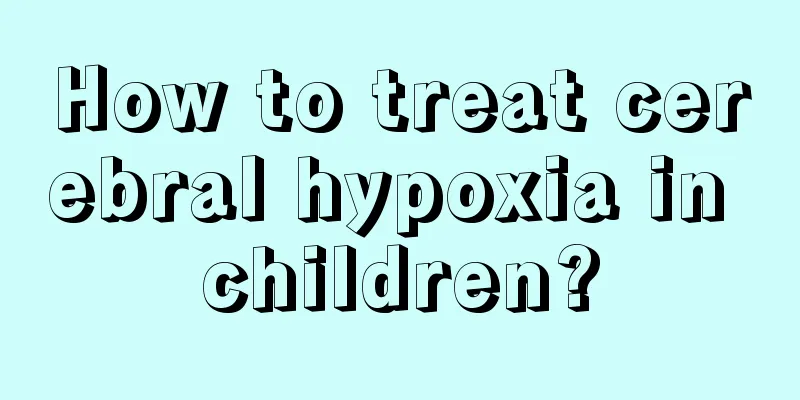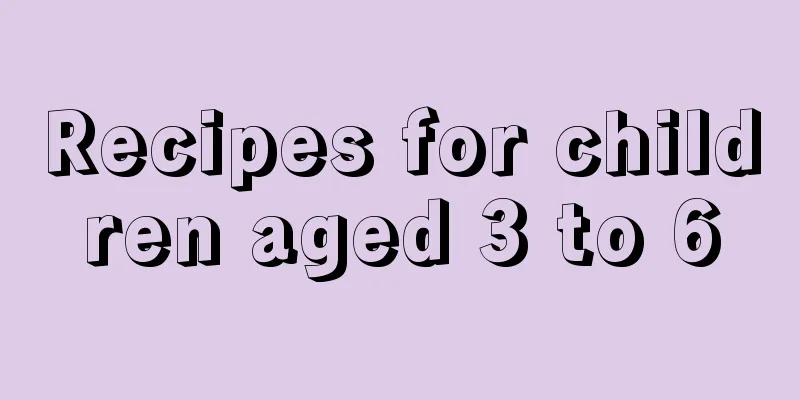How to treat cerebral hypoxia in children?

|
The difference between humans and animals is that humans can think; the reason why humans are advanced animals is that humans can think while animals cannot. However, in the 21st century, various brain-related diseases are constantly appearing around us, such as cerebral hypoxia. The main group of patients suffering from cerebral hypoxia are children, because children may not get enough oxygen at birth, so their lives may be in danger at any time after birth. If brain hypoxia is not treated, it will be detrimental to the healthy growth of the child. So how do we treat brain hypoxia in children? 1 In order to prevent the occurrence of perinatal asphyxia, we must continuously improve obstetric technology, deal with intrauterine distress in a timely manner, and end delivery as soon as possible. Infants who suffer asphyxia after birth should be resuscitated promptly to reduce the incidence of HIE. It is generally believed that if after comprehensive resuscitation measures, the patient still does not recover spontaneous breathing or the Apgar score is still below 1 point after 20 minutes of rescue, the brain has suffered serious and irreversible damage. 2First of all, maintain a quiet indoor environment, and do not hold or move the baby frequently. 3. Pay attention to keeping warm. Overheating can easily cause the baby to lose water and become dehydrated; too cold can cause the body temperature to remain unchanged or neonatal scleredema. The ideal temperature for your baby's room in winter should be between 18 and 22 degrees. If conditions do not allow, you can place a hot water bottle around the newborn's swaddling clothes. The water temperature should be 40-60 degrees. Change the water every 1-2 hours to keep the baby's body temperature between 36-37 degrees. Also maintain a certain air humidity. 4. Feed the baby carefully. You can also use a milk to water ratio of 1:1, 2:1 to 3:1, and milk with 5% sugar water to feed the baby, and gradually increase the proportion of milk. Feed in small amounts and multiple times. Do not feed too much at one time to prevent vomiting, aspiration, and the risk of aspiration pneumonia and suffocation. Babies who are fed milk should supplement calcium and cod liver oil in time. 5. Prevent infection. There should be less traffic in the room where the newborn is located, and relatives with infectious diseases, skin infections or colds should try to avoid contact with the baby. At the same time, we should strengthen the care of the navel, buttocks and oral cavity to ensure the healthy growth of the baby. The above is an introduction to how to treat cerebral hypoxia in children. I hope it will be helpful to you. It is not impossible to recover from brain hypoxia in children. As long as we are willing to actively cooperate with the doctor's treatment, the child will be able to recover soon. Of course, children should also be checked for cerebral hypoxia regularly, because regular checks are beneficial to the healthy growth of children. I wish you a happy life. |
<<: Why is the child's hair yellow?
>>: Treatment for brain hypoxia in premature infants
Recommend
What to do if your baby can't speak clearly
In daily life, every couple in every family wants...
What causes pain in the knee of a child?
Children often suffer from knee pain, which troub...
My baby's first deciduous tooth is crooked
Deciduous teeth are quite important for babies. I...
8 month old baby's face turns yellow
A baby's yellow complexion can make parents v...
Can synovitis in children be cured? How to treat it?
Children's joints are prone to symptoms such ...
Causes of coughing and vomiting in two-year-old children
There are few children who have smooth sailing, a...
What is the best way for children to lose weight?
Many people have a misunderstanding of children&#...
Children with transverse teeth?
Babies will grow deciduous teeth as they grow. Ge...
What to do if your baby is anemic for one week
Anemia in babies is a common disease. There are r...
What are the early symptoms of avascular necrosis of the femoral head in children?
In our impression, femoral head necrosis should o...
How to treat papular dermatitis in children?
Many mothers have had this experience: when their...
How to treat children’s spleen and stomach strengthening drugs?
Children are a vulnerable group, and their bodies...
Treatment of large gaps between baby's front teeth
The birth of every new life will make our parents...
Baby crying hoarse voice
When a baby starts crying, he will cry at the top...
What should I do if my child’s toenail falls off?
As we all know, toenails are a part of our human ...









